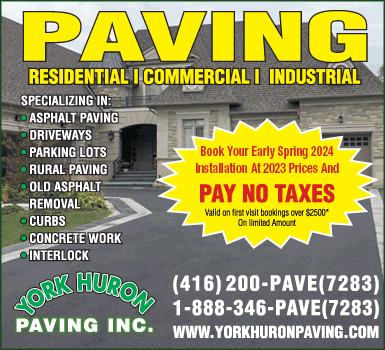Teardowns and renovation of homes contributed to the skyrocketing Toronto home prices, report finds
Tearing down and renovating freehold properties during the pandemic contributed to soaring costs of the Toronto area’s detached homes, which skyrocketed by almost 35 per cent in just four years.
Billions spent in infill (developing a vacant lot or tearing down an existing structure) and renovations over the pandemic years raised the overall value of residential housing stock and continues to support higher pricing on single-family homes despite downward market pressure in the country’s most expensive markets — Toronto and Vancouver, according to Re/Max Canada’s Tuesday report.
“Renovation and infill activity is raising the average price of homes one property at a time, impacting values of surrounding real estate, changing the physical landscape as well as the mix of the housing supply and homebuyers in the city,” the report said.
The average price of a detached home has climbed by almost 35 per cent in the GTA between December 2019 and December 2023, rising from $1.05 million to $1.4 million.
The 2024 Re/Max Canada “Changing Landscapes” report examined the evolution of housing stock and trends impacting values in Canada’s two largest real estate markets in recent years.
Between 2019 and 2023, the national increase in renovation spending, including additions, alterations, upgrades and equipment, approached an estimated $300 billion, an 8 per cent increase over the previous five-year period.
Revitalization remains one of the “most underestimated factors” behind escalating housing values, the report said, as a “staggering amount of money is funnelled into renovation” while infill redefines neighbourhoods, especially in areas where the value of existing homes haven’t kept pace with increasing land values.
For example, wartime bungalows and smaller two-storey homes continue to be primary targets, making way for custom builds gentrifying neighbourhoods.
The report said changing lifestyle trends have also led buyers to turn more single-family homes into multiplexes due to multi-generational households or homeowners looking to rent out part of their home to help pay for the mortgage or have a supplemental income.
During the same period, the value of residential building permits issued for single-family dwellings in the Toronto and Vancouver census metropolitan areas (CMAs) between January 2019 and December 2023 sat at just over $27 billion, according to Statistics Canada — down almost 24 per cent from the previous five-year period.
In contrast, the value of multi-family building permits was up 60 per cent between January 2019 and December 2023, compared to the previous five-year period, meaning there’s more being invested in multi-family development, as developers focus on high-density housing in an effort to maximize land.
“With all available tracts of land in the city committed to high-density construction, the single-detached home is quickly becoming a unicorn,” Re/Max Canada president Christopher Alexander said in the report.
Because close to 30 per cent of the GTA’s existing housing stock was constructed in 1960 or before, according to data from Statistics Canada, renovating or infilling properties is a “trend” that’s here to stay. The push to make the best use of scarce land has homeowners and builders striving to maximize square footage or increase density on individual building lots in traditional urban neighbourhoods, the report said.
Entire neighbourhoods, especially in midtown Toronto, have been “transformed,” while the evolution of Parkdale, Trinity-Bellwoods, College Street West, East York, Riverdale, Leslieville and St. Clair West is “just beginning.”
It’s a trend that will continue as land in Toronto’s downtown is scarce, and will continue to attract those looking to densify neighbourhoods.
“Many homes have been enhanced improving the value of the property,” said Tim Syrianos, principal broker and owner of Re/Max Ultimate Realty.
He noted the increased value in turn stimulates commercial real estate and interests, with “more shops and amenities coming into a neighbourhood.”
This article was first reported by The Star













